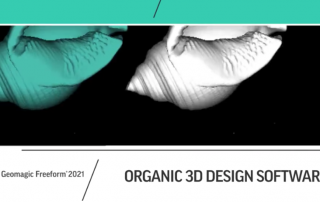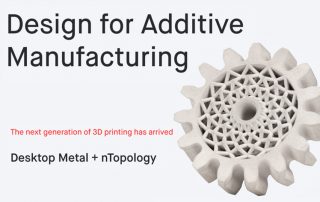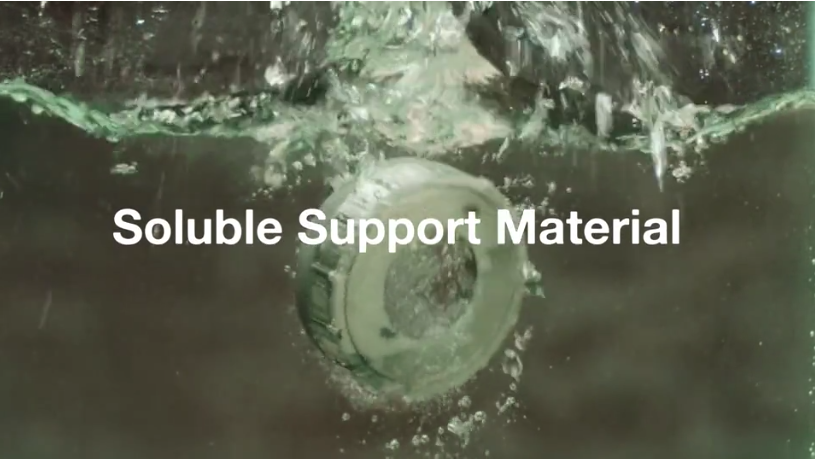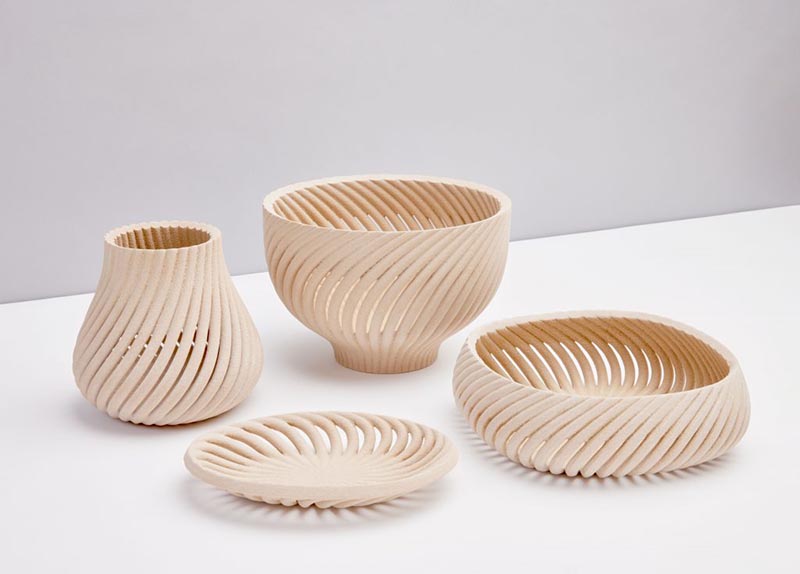Organic 3D Modeling with Freeform
In this post, we’ll take a look at Geomagic Freeform, an organic 3D design software. Freeform offers a sculpting and design toolset to sculpt, detail and deform virtual models into any form you desire. In this example, we’ll focus on Sub D Modeling. This Technique is used to create detailed modeling from a polygon mesh framework. Through Sub D modeling, you’re not modeling the actual surface or solid, you’re shaping the solid by manipulating the surrounding Control Cage. In this example, we have a 6 faced cube. Our underlying surface has 6 faces as does our Control Cage. If we take the surface model and click level 2, it divides each face into four faces and averages the positions with all the adjacent faces. We’re left with a new surface model, with 24 faces. At the next level, we quadruple to 96 faces. And as we go to level 5 and even 6, the faces get smaller and smaller until we get to the point where our model looks like a sphere. By increasing the numbers of faces, we can create very fine details in certain areas and have very coarse details in other areas. Now let’s take a look at the Control [...]
Desktop Metal Studio or Xact Metal XM200 3D Printing System?
How to make the best 3D Printing choice for your application First up, let’s talk about the Desktop Metal Studio System for low-volume or functional prototype 3D metal parts: What is unique about the Desktop Metal Studio System? The Desktop Metal Studio System is an end-to-end process with a software-managed workflow (Fabricate) to ensure your success. It utilizes a 3D technology called Bound Metal Deposition (BDM), which is comparable to one of the most widely known plastic 3D printing processes, Fused Deposition Modeling (FDM). The Studio System Printer comes with two ancillary system components depending on the chosen setup. The first is the Debinding unit which removes binding agents from printed parts and the second is a large-capacity sintering furnace that requires no special venting and is safe to touch. The entire system is considered office-friendly and calls for no special powder handling. The newly released Studio 2 has reformulated consumables to further simplify the process by cutting out the debinding unit completely and the burn out occurs in furnace. Desktop Metal Studio System provides a new strategy to achieve an end-use metal part. Unlike traditional machining or tooling to cut a block of metal to create a metal part, the Studio System [...]
Upcoming Desktop Metal Webinar – Design for Additive Manufacturing
The next generation of 3D printing has arrived - Desktop Metal + nTopology Over the next decade, additive manufacturing will enable new products to feature unprecedented levels of complexity, be 30-50% lighter, and be mass-customized to each local market. Join this event on June 16, 2021 from 11AM - 1PM EDT to learn about how you can start realizing some of these benefits today, from tips and tricks when designing parts for 3D printing in CAD, to next-generation technologies like topology optimization software to unlock the full potential of 3D printing in metals, polymers and elastomers. Register Here
Metrology Minute – Runout and Total Runout in GD&T
In continuing our Metrology Minute focus on GD&T, this month we will discuss Runout and Total Runout. Simply defined, Runout is how much a model feature varies with respect to a datum when the part is rotated about the datum’s axis 360 degrees. The datum in question would necessarily be an axisymmetric feature. It generally involves the analysis of a circular feature that is created when taking a single point tool and rotating it around a feature to form what would be a circle. Runout may be called out against any feature that is rotated about an axis. Some refer to it as how much ‘wobble’ occurs when one part feature is referenced to another feature that is generally a datum. In the example shown, Datum A is the larger cylinder and the Runout is tested by taking a single point and revolving it in a circular path around the smaller cylinder to test for how much wobble (out-of-round) the formed circle is. The tolerance provided in the callout symbol (.2mm, in this case) references the acceptable wobble in the resultant circle. What is important to note is that these formed circles are checked individually, not with respect to each other. So in [...]
Comparing 3D Printer Soluble Support Material
Today we will discuss soluble support material for 3D printers that are in the extrusion category. During the extrusion-based 3D printing process, parts that feature structural overhangs or internal cavities require support material during a build. Think of it as temporary scaffolding extruded alongside the base material to support the part as it is building up layer by layer. Upon completion of a print, the support structure can be either torn away manually or dissolved in a solution. Soluble support is removed by a completely automated process using either a wash tank or a container filled with water. Dissolvable material allows for geometries that have internal void and leaves little to no blemishes to the outer wall - keeping fine delicate features fully intact. Internal cavities and un-scarred surface-finish are features that breakaway support material cannot accommodate. Let’s take a look at four different types of soluble supports material. The first type of soluble support we'll cover is the most common - PVA or Polyvinyl Alcohol, a water-soluble polymer. PVA is a colorless, odorless synthetic polymer with significant biocompatibility properties. It is compatible with PLA, Tough PLA, PET-G, and Nylon. Aquasys(r) 120 is the world's first tap water-soluble support material that works with [...]
Desktop Metal Redefines Woodworking With New Wood 3D Printing Technology
reprint from https://3dprintingindustry.com/ Desktop Metal has launched its subsidiary Forust, a brand focused on 3D printing functional end-use wood parts via binder jetting. The Forust process works by upscaling waste byproducts from the wood manufacturing and paper industries (sawdust and lignin). By mixing these byproducts with a special bio-epoxy resin composite, the company can create sustainable 3D printing materials compatible with Desktop Metal’s binder jet technology. With the launch, Desktop Metal is now offering architects, designers, and manufacturers a new route to custom wood part production, whether it be for home decor or luxury architectural applications. Although it may seem like a late April Fools’ joke at first, customers can already visit the Forust store page to order one of the company’s ready-made, 3D printed consumer home goods pieces. The first batch of products is being offered as part of an exclusive collection by Swiss industrial designer Yves Béhar. William McDonough, a renowned architect and leader in sustainable development, stated, “The Forust technology allows us to take something that was previously wood waste and re-materialize it into exquisitely beautiful and useful things. We are honoring the cellulose and lignin of the trees by rearticulating them into assets for present and future generations. By [...]







